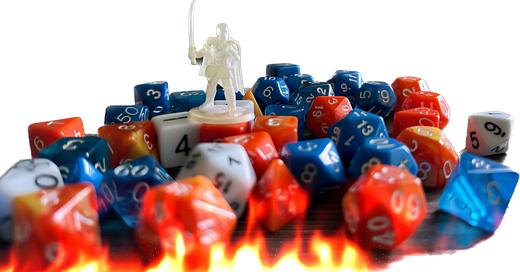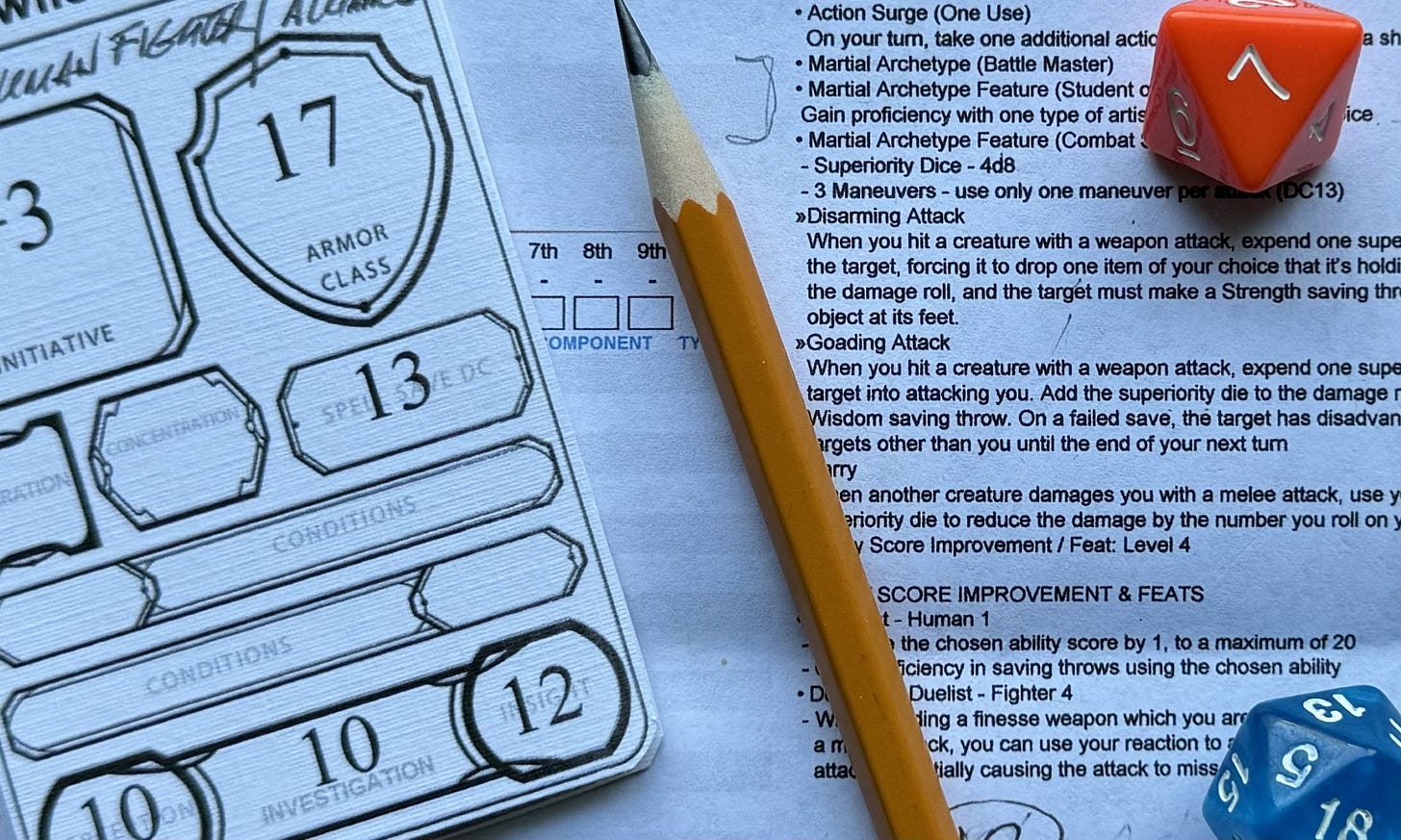Several years ago a buddy of mine and I attended a TTRPG convention in the greater Houston area.
There is something to be said about keeping things very simple especially for convention play. Light-on-details, one-shot D&D scenarios are some of my favorites. The players gather at the table and get a brief description of the mission from the DM — a clear goal for the party to accomplish before the allocated time expires.
I was doing a bit of reminiscing about this gaming con. It’s now defunct or lingers on in a much smaller footprint than before. My friend and I attended this con several times, and we had several memorable moments playing high-level as well as low-level D&D characters in various scenarios.
While I can’t recall all the scenarios over the years, one involving the job of investigating a derelict ship stuck with me.
The story as follows is to the best of my recollection.
The ship had drifted into a city’s harbor, and our motley crew of low-level adventurers either volunteered, or drew the short straw, and was tasked with checking out the ship.
In reminiscing, I thought about what made this scenario particularly memorable. These key ingredients are found in many scenarios, but I thought the specific combo in this setting added something extra.
SLIM PICKINGS
My friend’s character and my character were both level four. (Twenty is the highest level). I played a battle master fighter. We can’t remember what character class my friend played but possibly a fighter or a rogue.
The other two players, who we had never met until they sat down at the table, played level-two characters — a fighter and a monk, respectively.
As lower-level characters, hit points and cool character abilities were in short supply across the team. Little margin for error or for bad dice rolls.
UNCERTAINTY
What mysteries were aboard this derelict sailing ship? No doubt a surprise awaited the adventurers. That much was certain.
In a game of fantasy make-believe, the real uncertainty was amongst the players.
My friend and I have similar play styles. While we would hatch plans before the start of an encounter, we could just as easily improvise and follow each other’s lead if something unexpected happened. We operate as a team.
But, this was a team of four, not a team of two. We didn’t know the play styles of the other two players, and vice versa. There wasn’t the opportunity to develop various and elaborate theories of tactical D&D play even if we had wanted. It’s a gaming con, and the clock is always ticking, obedient to the day’s schedule.
Generally in D&D, there are some opportunities for group strategy discussions, but after some brief investigation upon boarding the ship, animated skeletons ominously rise from the main deck. Game on. Roll initiative.
When initiative is called and players are taking turns, I like the approach of other players remaining quiet when someone else is on the clock and deciding what to do.
It can be hard to stay cool as another player indulges in a soliloquy of options, but the stream of consciousness also can add a level of suspense and drama. What is the other player going to do? If the player does something crazy and unexpected or is overly cautious, I’ll have to adjust my own planning. And, keep in mind that playing a character at lower levels warrants a level of prudence just to stay alive. A game within the game.
TOTAL CHAOS
In the midst of the battle and outnumbered by skeletons, there is a larger attack on the city’s harbor. We don’t know if this larger attack is related or unrelated to the appearance of the mystery ship. We just see other ships entering the harbor and hear the clamor of bells and horns from the watch towers. As other events are unfolding across the harbor, the derelict ship is hit (perhaps by friendly fire). A stone from a catapult or trebuchet cracks one of the masts.
Shattered wood, splinters, rigging, and sail cloth rain down on the adventuring party.
The DM asks each of us to roll a ten-sided die.
Each die roll corresponded to a different result. If you rolled a particularly high number, say a nine or a ten, nothing happened to your character.
We all rolled different numbers. Based on the rolls, only one character emerged unscathed.
One character was knocked prone and trapped. A strength check would be needed to get free.
Another character was dazed and disoriented. Grazed by the falling debris, the character was deafened for a minute. Another complication to communicating and working out a plan in the midst of battle.
My character was hit by a large splinter and took some amount of damage.
I really liked this added layer. The characters are dealing with their own problems — contending with these skeletons — and then a larger battle erupts across the entire harbor. A simple, yet effective, way of ratcheting up the stakes.
Would the derelict boat get hit again?
Low on hit points and most special abilities exhausted in the struggle, the newly formed adventuring party did succeed in dealing with the skeletons.
The force of seaborn marauders also was seen off by the city’s defenders.
As the clock ticked on to signal the start of the next session on the agenda, the deeper mystery of what afflicted the ship would have to wait for another time.
LASTING IMPRESSIONS
What lessons can we take from this D&D one-shot to aid our own worldbuilding and storytelling?
The main characters should be heroic, but they should also be vulnerable. Scarcity of hit points and signature abilities upped the danger level for the players. It made every player feel like one or two bad decisions could spell disaster.
The real-world considerations of players not knowing each other added to the drama. Think about the context and the characters in your story. Do they know one other? Maybe they know each other, but can they trust one another? Have they been through a dire situation together? What assumptions do they make about one another based on a lack of information or when facing new circumstances?
Keep the story multi-dimensional. Nest the immediate story in a larger context. The “A story” was the players investigating and trying to take control of the derelict vessel. The “B story” was the larger struggle for the harbor itself. The players’ characters had the spotlight, but if the entire harbor was not defended by forces offstage, the heroes may find themselves going from the proverbial frying pan into the fire.
What are some of your favorite D&D or other TTRPG moments? What worldbuilding or storytelling lessons would you share with others? Leave a comment.





